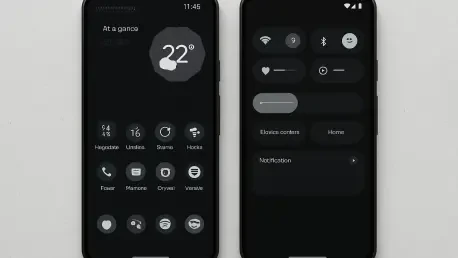In a landscape where software updates can make or break a smartphone’s appeal, a notable tech company has just unveiled an exciting opportunity for early adopters to dive into the next big thing with the launch of a Closed Beta program. This announcement centers around a chance for select users to experience cutting-edge technology before it hits the mainstream market. Specifically, owners of a newly launched device are being invited to participate in a testing phase that promises to shape the future of mobile operating systems. This initiative not only highlights the company’s commitment to innovation but also underscores the importance of user feedback in refining software experiences. As anticipation builds, this move positions the brand as a frontrunner in delivering timely and advanced updates to its community, setting a high bar for competitors.
Early Access for Enthusiasts
The spotlight shines on the Closed Beta program for Nothing OS 4, which is built on Android 16, exclusively for owners of the latest Nothing Phone (3). This program offers a unique chance for tech enthusiasts to test the software ahead of its official release. Applications for the beta are open, but interested participants must act quickly to submit their entries by a strict deadline of 5 PM BST on August 3. Throughout August and into early September, selected testers are expected to provide consistent feedback to help developers iron out any issues. However, a word of caution accompanies this opportunity: as an early beta, the software may come with bugs and unfinished features. Users considering participation should weigh the excitement of early access against the potential for a less-than-smooth experience. This phase represents a critical step in ensuring the final product meets high standards, reflecting the brand’s dedication to quality through community involvement.
A Commitment to Swift Updates
A key aspect of this development is the company’s focus on rapid software rollouts, as emphasized by CEO Carl Pei during the unveiling of the Nothing Phone (3). The goal is to launch Nothing OS 4 by the end of autumn, marking a significant milestone for the device as the first in the lineup to adopt Android 16. This ambitious timeline demonstrates a proactive approach to keeping users equipped with the latest technology. For those who may miss out on the Closed Beta, there’s still hope with an Open Beta planned for September, broadening access to the update later on. This strategy not only ensures that early testers help refine the system but also guarantees that a wider audience will eventually experience the enhancements. Such dedication to swift updates sets a precedent in the industry, showcasing how user-centric policies can drive technological advancement and maintain a competitive edge in a fast-paced market.
Balancing Innovation with Realism
The narrative surrounding this beta testing phase strikes a balance between enthusiasm and practicality, capturing the dual nature of early software trials. On one hand, there’s palpable excitement among the user base for getting a firsthand look at Android 16 through Nothing OS 4, which promises new features and improved performance. On the other hand, the acknowledgment of potential challenges, such as glitches or incomplete functionalities, serves as a reminder of the experimental nature of beta programs. This balanced perspective ensures that participants enter with realistic expectations, understanding both the privileges and pitfalls of early access. The initiative also reflects a broader trend of involving communities in the development process, fostering a collaborative environment where user insights directly influence the final product. This approach not only builds trust but also enhances the software’s relevance to real-world needs.
Looking Ahead to Refined Technology
Reflecting on this rollout, the Closed Beta phase for Nothing OS 4 marks a pivotal moment in engaging users to perfect a major software update. The structured timeline for feedback and the subsequent Open Beta opportunity demonstrate a well-thought-out plan to refine Android 16 integration. This effort highlights how crucial user collaboration is in addressing early-stage issues before a wider release. Moving forward, the focus should remain on leveraging these insights to deliver a polished experience that aligns with user expectations. As the tech landscape continues to evolve, such initiatives could inspire other companies to adopt similar user-driven testing models, ensuring that future updates are both innovative and reliable. The journey from beta to final release will be one to watch, as it sets a benchmark for how community involvement can shape the trajectory of mobile technology advancements.









